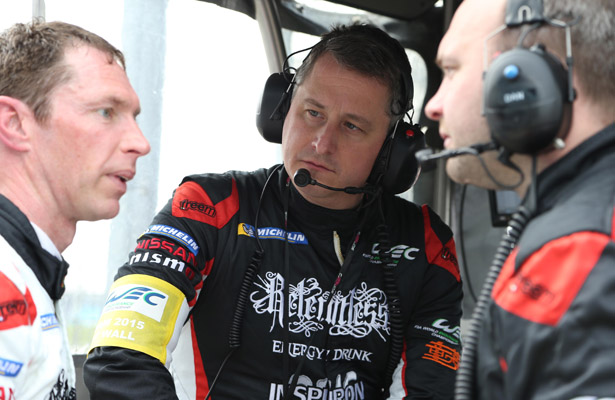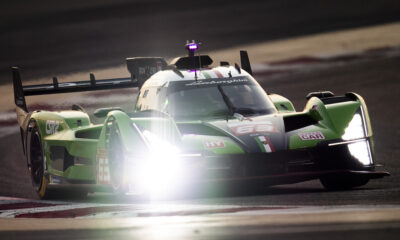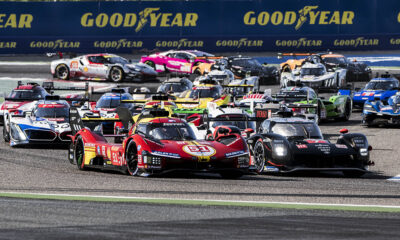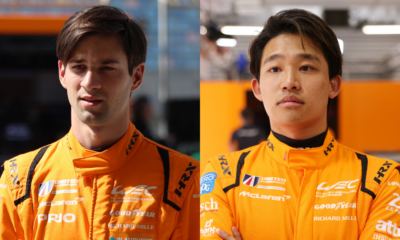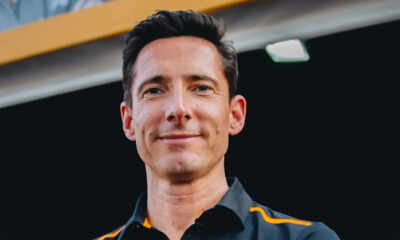While a number of entities have been caught out by the new-for-2017 LMP2 regulations, including Strakka Racing, the British squad has made the most of the evolving prototype landscape by making the move into the LMP1 ranks for 2017.
Strakka’s proactive approach, by announcing plans to design and build a bespoke LMP1-Light (non-hybrid) car, marks the first LMP2 convert as part of an ambitious project headed up by team principal Dan Walmsley,
“When the ACO informed us of the direction they were going for 2017 with the limited number of manufacturers, it didn’t particularly fit in our business model,” Walmsley told Sportscar365. “That’s what led us to a rethink our long-term strategy.”
Having planned a multi-year program in LMP2 with its Strakka-Dome S103 project, with intentions to sell the Japanese-designed, British-built prototypes to customers, Strakka has made a u-turn back to LMP1, which Walmsley says will offer the organization a platform for expansion within the industry.
“We have been building some internal entities in additive manufacturing and advanced manufacturing techniques, so we really needed a platform to try and grow that element of the business, but to still do something that was still exciting as a race team,” he said.
“As much as we’re interested in building a business, we’re also got to remember that our heritage is racing. We want to be in an arena where we can demonstrate our capabilities.
“We personally feel there is a good chance of that happening in LMP1-Light.”
Walmsley said the team is now in the stages of finalizing its key technical partners, such as engine and gearbox providers, with a series of announcements on that front expected to be made by the end of next month.
While the car is not expected to begin on-track testing until post-Le Mans 2016, Walmsley has stressed the importance of getting a jump start on things, after facing multiple delays with its previous Dome LMP2 project, which led to the team sitting out the entire 2014 season.
“I think one of the big lessons learned on the LMP2 project is that we green-lighted it in October the year preceding the target delivery,” Walmsley said.
“We missed the delivery date by a matter of weeks, but those weeks meant the whole project had been rushed… and we ended up [giving] ourselves an extra 12 months for that.
“Over the winter of 2013/2014, when the regulations changed in LMP1 and Formula One, it made a very big impact on the manufacturing capability to control price and delivery for the Dome S103.
“So we’re trying to give ourselves a much better ability to flow the manufacturing of this through quieter periods of manufacturing in the UK, but also to grow our in-house manufacturing capability to make sure we’re in control for the production of the car.”
Walmsley said the yet-to-be-named car will be designed in-house and will utilize the company’s new 3D printing and additive manufacturing capabilities, although also still working with some existing composite suppliers.
The first stage of Strakka’s component manufacturing will be evaluated on its Dome LMP2 car, which will be turned into a test mule and is also expected to also be fitted with the future LMP1 car’s engine for testing.
While a single-car program is planned in the FIA World Endurance Championship for 2017, Walmsley hasn’t ruled out a larger effort, should the right pieces fall into place.
“I think the project in itself is quite ambitious,” he said. “Therefore, we really want to focus on delivering the project correctly. Would we consider running a second car? Absolutely.
“We’ve had some chat with people that would be interested in either us running a car for them as a team or interested in buying the car. But they’re very much in its infancy at this stage.
“The focus for me is over the next few months to make sure we get everything in line to make sure this project goes from being an exciting prospect to an exciting reality.”
Walmsley, meanwhile, is upbeat on the future of the LMP1 privateer class, particularly with the arrival of new regulations and the potential for further growth in the sub-class, which has struggled for entries.
“I think with the 2017 P2 regulation changes, there might be a few of the more premium LMP2 teams going in that direction,” he said. “It felt like a good place for us to go.
“We also felt there was a benefit to announce it now as it signals to everyone else what our intentions are. It will hopefully entice other people to come with us and we can have a good field of established [LMP1] privateers to race against.”
The Strakka team principal is hoping to see at least six cars in the LMP1-L classification, which would come as a significant boost over this year’s three-car entry split between Rebellion Racing and ByKolles.
“We certainly see it as being sustainable,” Walmsley said. “Having spoken to the ACO, they’re very respectful for the privateers who have, through the darker times, kept the category going.
“I think that could grow the more people come together. There’s probably the opportunity to make some fundamental architecture between the teams.
“For example, the monocoque could be shared, you could see gearboxes being shared that would bring all the costs down, which would make it more accessible to other teams.
“We’ll have to wait and see. We think LMP1-Light is the future and that it’s going to grow. We’re really excited to be going there.”

